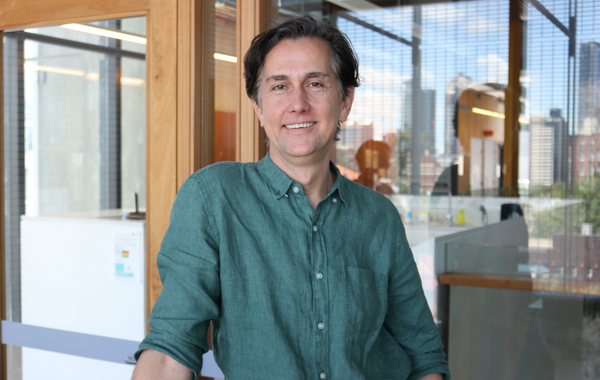According to a recent study from the Garvan Institute of Medical Research, some cancer cells can use parallel mechanisms to elude immune system defenses and withstand immunotherapy treatment.
 Professor Alex Swarbrick. Image Credit: Garvan Institute of Medical Research
Professor Alex Swarbrick. Image Credit: Garvan Institute of Medical Research
Breast cancer cells can proliferate and metastasize by limiting the action of killer T-cells and impairing the immune system’s ability to flag tumor cells for destruction, the scientists found.
We know that breast cancer typically doesn’t respond well to immunotherapy, and we wondered if there’s an intrinsic mechanism enabling breast cancer cells to escape the immune system.”
Ms Louise Baldwin, Study First Author and PhD Student, Garvan Institute of Medical Research
Ms Louise Baldwin is a student in Associate Professor Alex Swarbrick’s laboratory at Garvan.
The scientists employed a method called DNA barcoding, which tags cells with a recognized sequence and monitors the progression of tumor cells over time.
We showed that there are rare cancer cells capable of escaping the immune system and escaping treatment with immunotherapy.”
Ms Louise Baldwin, Study First Author and PhD Student, Garvan Institute of Medical Research
The mechanisms could be exploited as potential therapies to prevent tumor cells from adapting and spreading. Another potential future application is in prognosis, where a high number of cells could suggest which patients are unlikely to respond to immunotherapy.
The research was published in Nature Communications journal.
How cancer cells outplay the immune system
While many malignancies can be successfully treated with immunotherapy, in certain individuals the cancer cells develop the ability to trick the immune system’s defenses. This is known as immunoediting, and it occurs when tumor cells interact with immune cells, resulting in the immune system destroying many malignant cells but leaving some unnoticed, allowing them to proliferate and spread.
The scientists employed mouse breast cancer cells tagged with a known DNA “barcode,” a sequence that was passed on from one generation of cells to the next.
The barcoding enabled the researchers to visualize where more aggressive, resistant cells came from. They were able to track it back to the original cell to identify if it had grown or shrunk.
Lead author Dr Simon Junankar wanted to understand whether resistance was adaptive—whether cancer cells duck and weave—or are they pre-programmed to evade the immune system.”
Alex Swarbrick, Associate Professor, Laboratory Head, and Co-Lead, Dynamic Cellular Ecosystems in Cancer Program, Garvan Institute of Medical Research
The researchers discovered that prior to treatment, the cancer cells had diversified. “Some cells had already acquired the ability to evade immunity, meaning they have an innate ability to escape the immune system,” he adds.
The cells appear to use parallel techniques to do this. One method is to inhibit the action of killer T-cells, which normally destroy harmful cells. The other is to lower MHC1 expression on cells, which serves as a marker for the immune system to identify potentially dangerous cells.
Associate Professor Swarbrick adds, “Most tumor cells vanish when the immune system gets switched on, but a small proportion keep growing and expanding. Tumors keep evolving and diversifying, and action by the immune system or treatment like chemotherapy is like pruning a tree—cancer cells get wiped out but the remaining branches on the tree continue to grow.”
The investigators also explored the genetics of the cells, but they found that there were no genes associated, indicating epigenetics might be at play.
Source:
Journal reference:
Baldwin, L. A., et al. (2022) DNA barcoding reveals ongoing immunoediting of clonal cancer populations during metastatic progression and immunotherapy response. Nature Communications. doi.org/10.1038/s41467-022-34041-x.